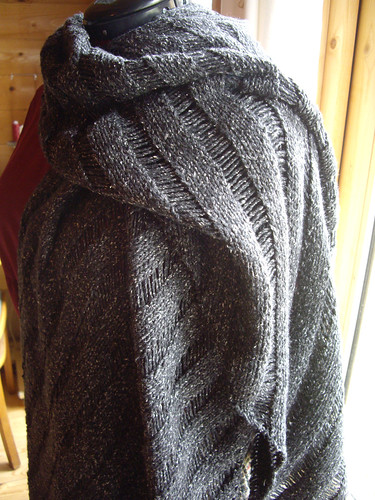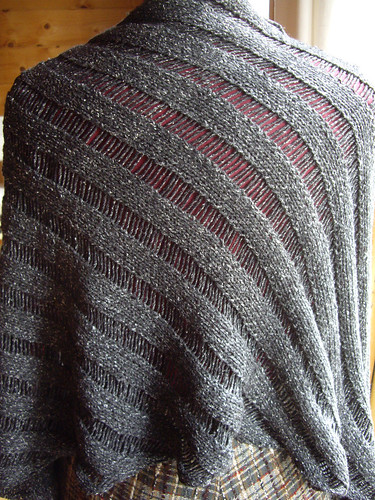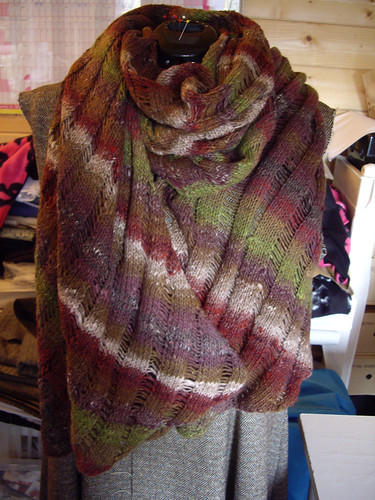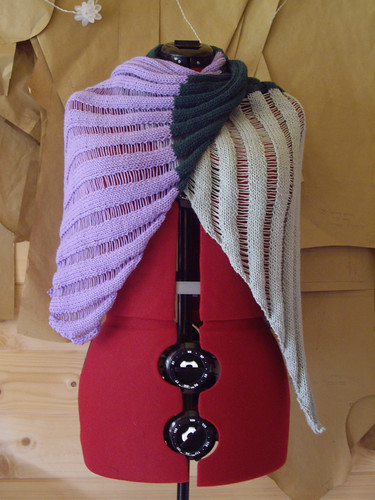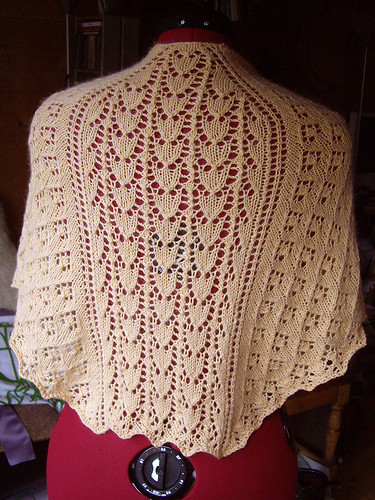
Now that these shawls are finally finished and have reached their recipients, I can safely show them to you all!
The Tulips Shawlette, above, is by Anniken Allis, and the pattern’s in Issue 36 of The Knitter. The moment I saw it, I reached for the first 4-ply yarn I could find in my stash, and started knitting. It was quite a while before I realised that I had no earthly use for a peach lace shawl, but I was enjoying knitting it so much that I didn’t really care. Eventually it occurred to me that it would look lovely on Paul’s grandmother, and it became her Christmas gift.
The yarn is Rowan Cashcotton 4-ply, now discontinued. I usually prefer not to work with cotton because it hurts my hands, but this is soft and lovely. Unfortunately the angora does shed – working with this on my lap made me wonder whether Bond villains need shares in lint rollers, to get rid of all the fluffy white hairs.
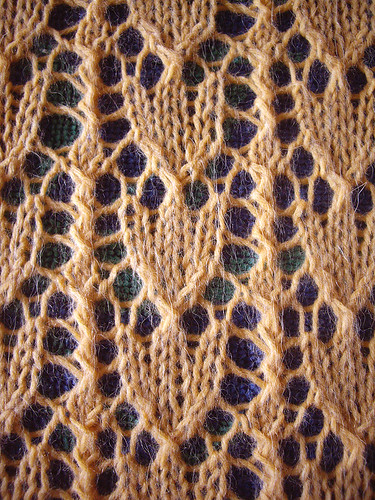
I hadn’t knitted any lace quite as complicated as this before, feather & fan being about my limit. But the two designs fitted together really well (being an 8-row and a 16-row repeat) and the pattern was written out as well as charted. I followed the written instructions for the most part, because I find a row of text easier to keep in my head than a row of symbols. I used a lot of sticky notes to mark my place, and it took me a long time to really understand how the pattern worked.
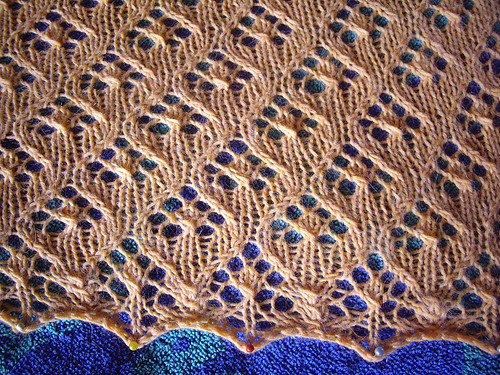
I did use the charts for the edging pattern, mostly because I couldn’t seem to get the written instructions to repeat properly. I’m not terribly keen on the edging, it doesn’t seem very definite, somehow. But I do like the shawl as a whole, and I feel a bit braver about working from charts now.

Because the Tulips pattern required a lot of concentration, I wanted another project to work on that was much simpler. I also wanted something that could also work as a lap blanket. This one is Wall of Shawl, by Martina Patricia Munroe. I think this design looks much more interesting in a handspun or multi-coloured yarn, but I thought it would be nice to make a “matching” gift for each of Paul’s grandmothers, and I was really enjoying working with the Cashcotton.
In fact, I was enjoying it right up until I came to knit the edging. That yo row (the decorative holes near the bottom) doubles the stitch count, at which point I thought my head might explode with boredom. I didn’t count the stitches on the final row, because I didn’t want to know!
The only thing I don’t like about this shawl is the way that the edge curls up. It’s a natural feature of stocking stitch, so there’s not much I could have done to prevent it. The pattern suggests knitting the ruffle about 3” long, which probably helps, but I was running out of time and patience. I could also have cast off on the wrong side, which would have turned the edging inwards, rather than out. But the shawl itself is a lovely size, and the fabric drapes beautifully.
I still don’t have any real need for a peach lace shawl, but I have quite a lot of this yarn left, and The Knitter seems to be going through a phase of showing me lots of lovely patterns that I really must knit as soon as I possibly can! I’m resisting the urge at the moment though, while I knit my fifth Clapotis – a nice simple one in Rowan Silky Tweed. After that, perhaps I’ll cast on for something a little bit more complicated.
Like this:
Like Loading...

